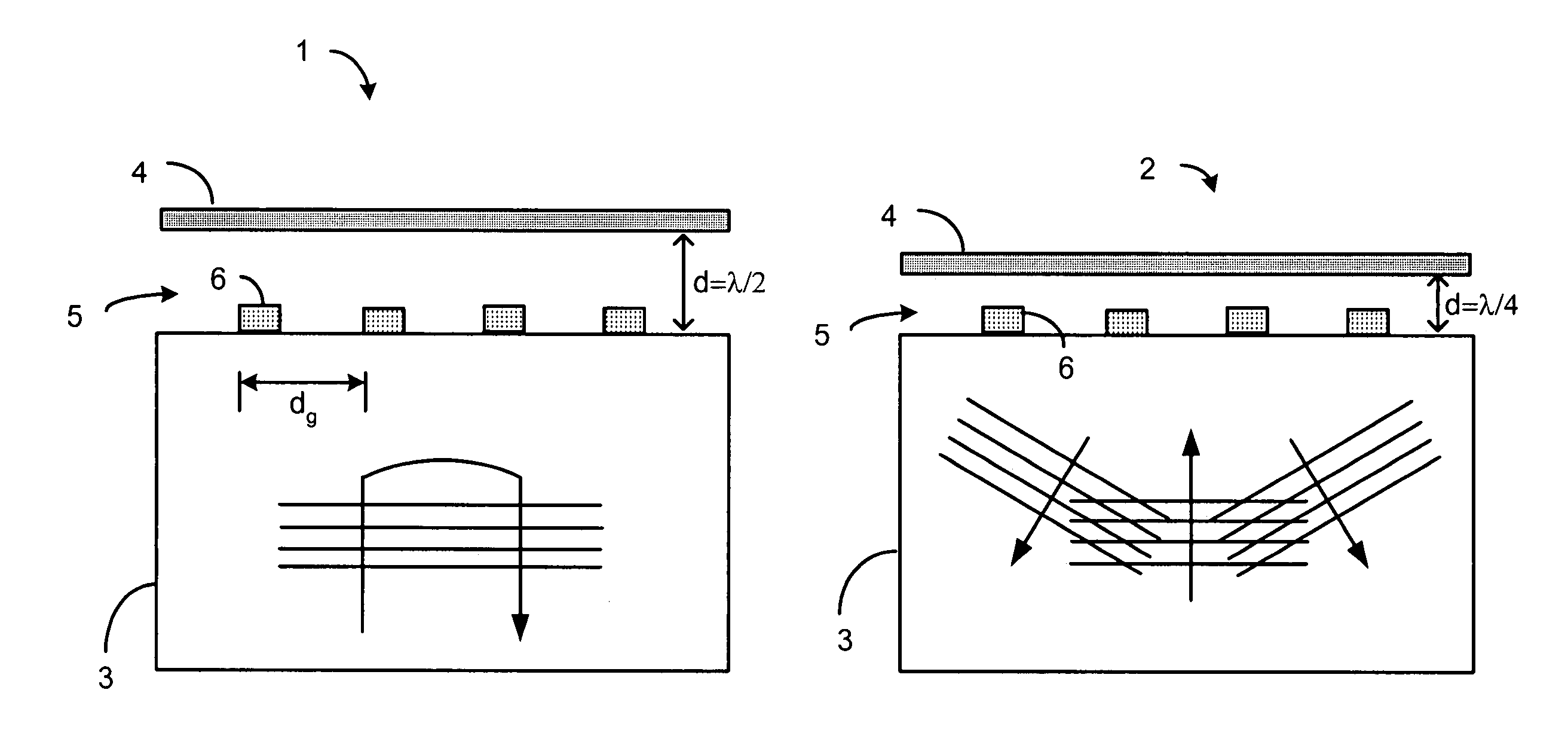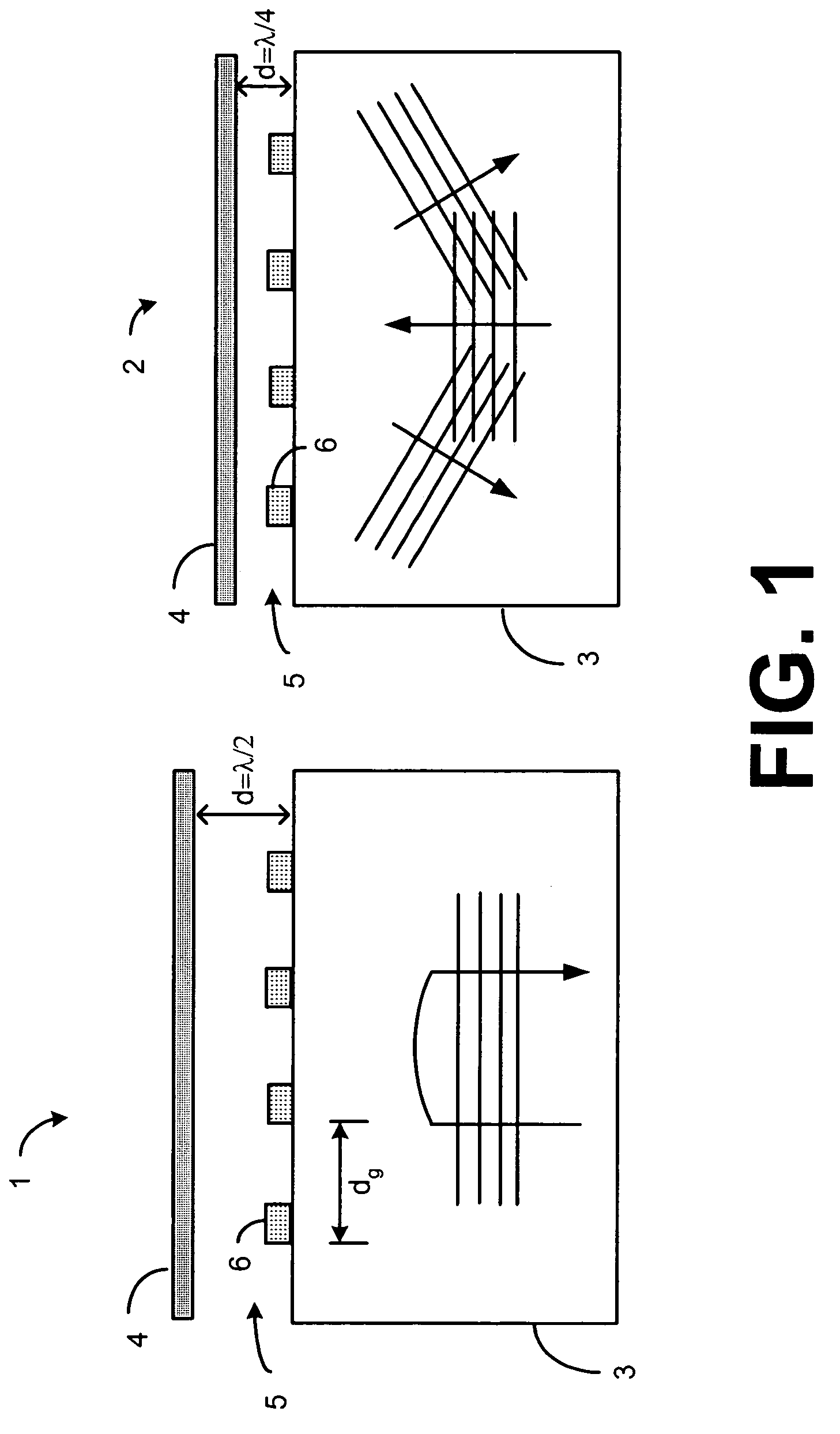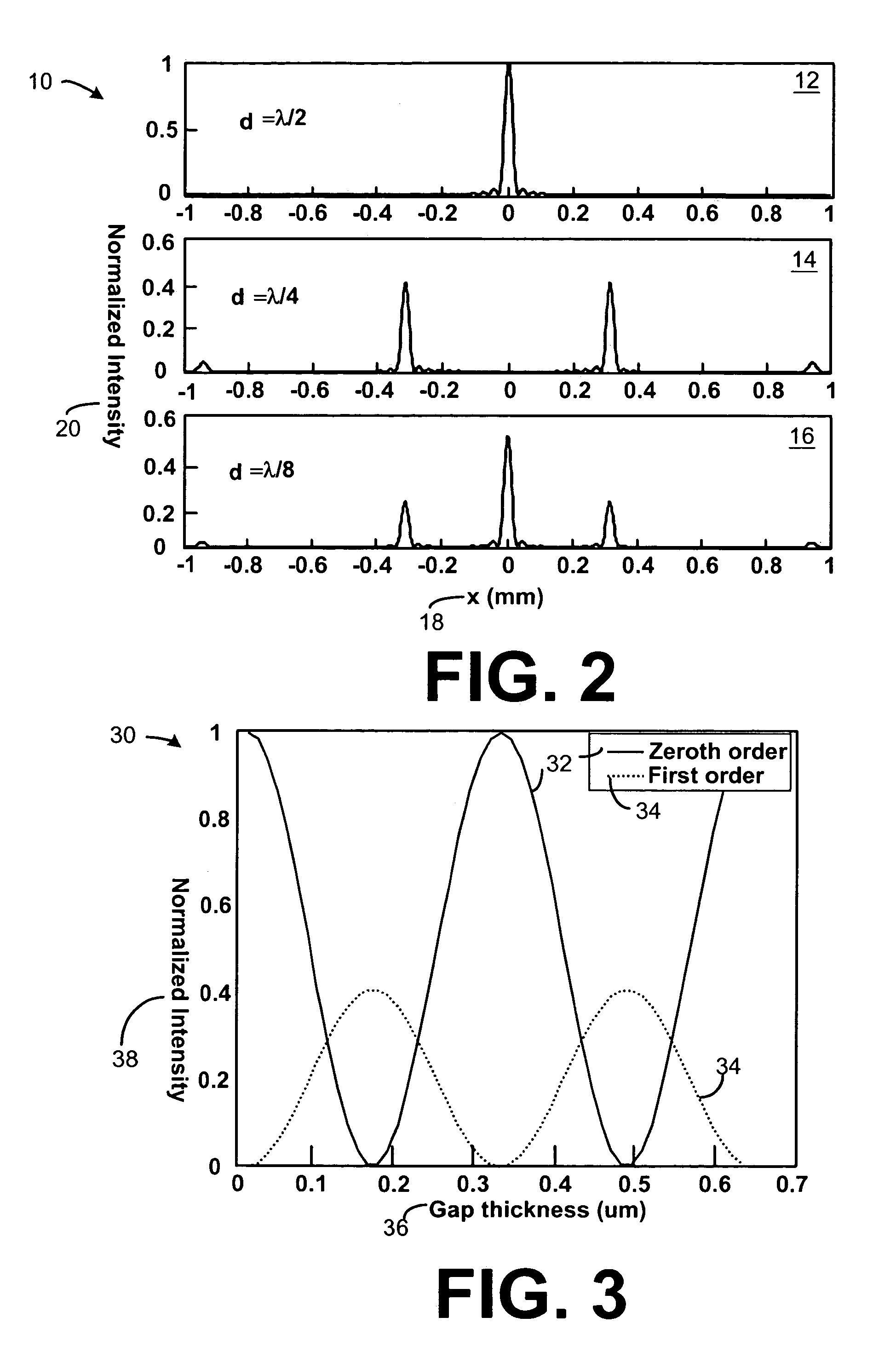Highly-sensitive displacement-measuring optical device
a displacement measurement and optical device technology, applied in the field of measurement devices, can solve the problems of nonlinear detection scheme, micro-machined capacitive microphones of the day, and use of high impedance amplifiers
- Summary
- Abstract
- Description
- Claims
- Application Information
AI Technical Summary
Benefits of technology
Problems solved by technology
Method used
Image
Examples
Embodiment Construction
[0026]As will be described in greater detail herein, displacement measurement devices in accordance with the present invention can measure the change in position of a membrane as a function of time due to a variety of factors. Furthermore, the displacement measurement devices can be optimized for displacement sensitivity and reduced noise causing a greater signal to noise ratio (SNR).
[0027]Referring now in more detail to the drawings, FIG. 1 is a diagram illustrating the concept of using a diffraction grating to split beams in a microinterferometer. This concept has been utilized in measuring precise relative displacements, such as for the measurement of Atomic Force Microscopy (AFM) tip displacement and in spatial light modulators, as in the grating light valves (GLV). This concept is also disclosed in U.S. Pat. No. 6,567,572 entitled “Optical Displacement Sensor” to F. L. Degertekin, G. G. Yaralioglu, and B. Khuri-Yakub, which is incorporated by reference in its entirety. AFM, in ...
PUM
 Login to View More
Login to View More Abstract
Description
Claims
Application Information
 Login to View More
Login to View More - R&D
- Intellectual Property
- Life Sciences
- Materials
- Tech Scout
- Unparalleled Data Quality
- Higher Quality Content
- 60% Fewer Hallucinations
Browse by: Latest US Patents, China's latest patents, Technical Efficacy Thesaurus, Application Domain, Technology Topic, Popular Technical Reports.
© 2025 PatSnap. All rights reserved.Legal|Privacy policy|Modern Slavery Act Transparency Statement|Sitemap|About US| Contact US: help@patsnap.com



